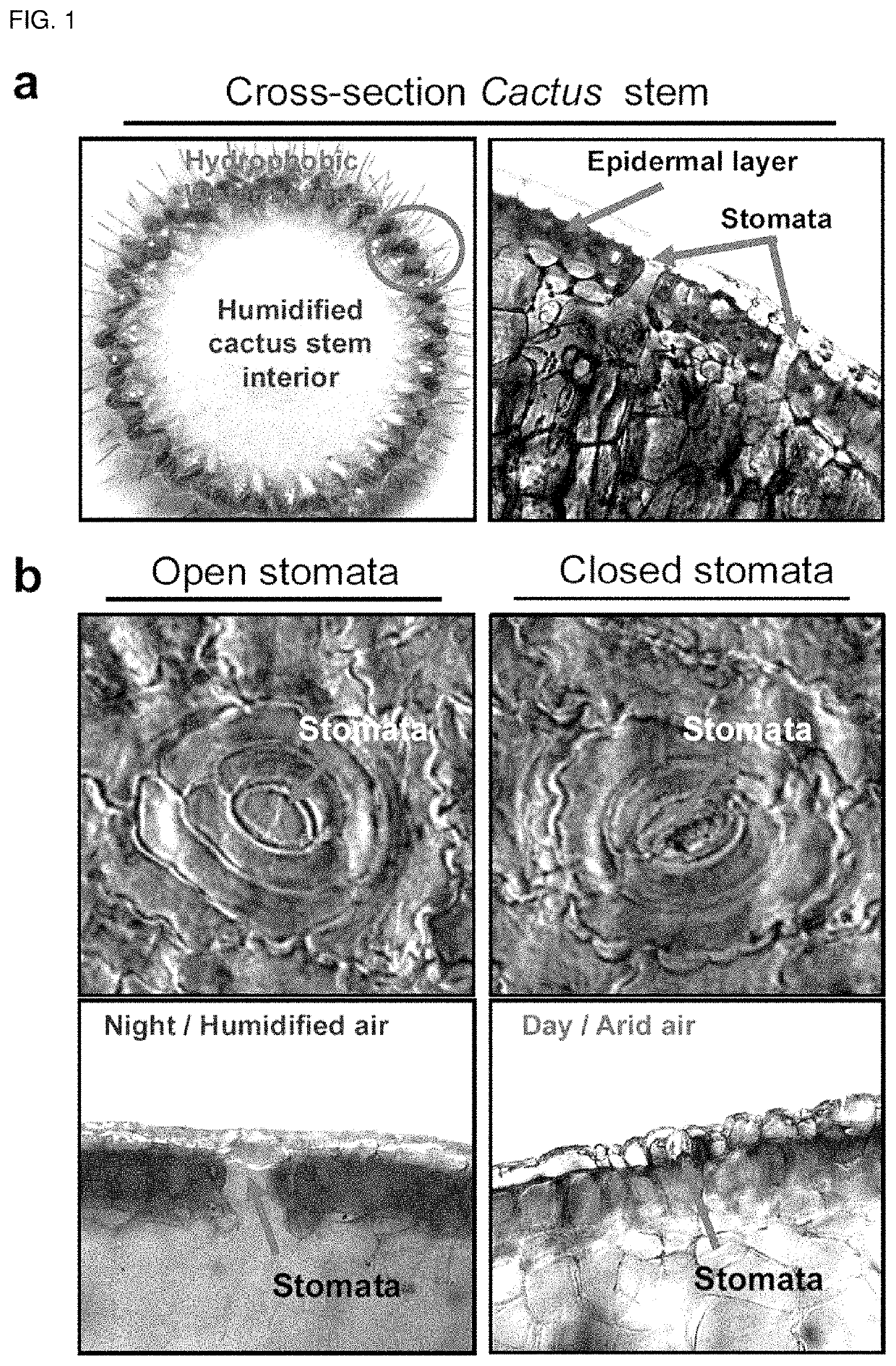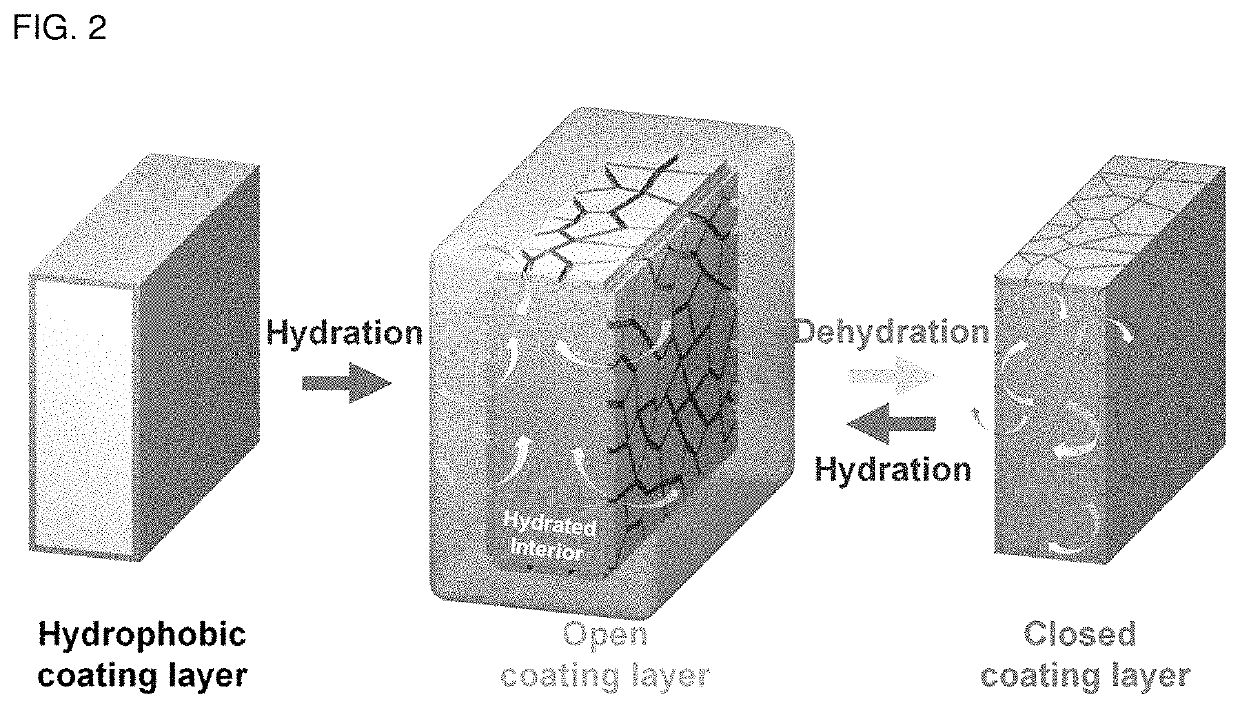Humidifying membrane for reverse electrodialysis and method for manufacturing the same
a reverse electrodialysis and self-humidification technology, applied in electrodialysis, electrical equipment, machines/engines, etc., can solve the problem of still limiting the improvement of ion selectivity, and achieve the effect of improving ion selectivity and low bulk resistan
- Summary
- Abstract
- Description
- Claims
- Application Information
AI Technical Summary
Benefits of technology
Problems solved by technology
Method used
Image
Examples
example 1
[0077]Sulfonated polyarylene ether sulfone having the first repeating unit represented by the following [Chemical Formula 1a] and the second repeating unit represented by the following [Chemical Formula 2a] was prepared according to the known method. Next, it was dissolved into N-methyl pyrrolidone (NMP) as a solvent to 15 wt % and formed into a film by a casting process to obtain a cation exchange membrane (BPSNa type, CBPS) having a thickness of 50 μm (BPSH was also obtained by treating BPSNA with sulfuric acid to convert Na into H). The resultant cation exchange membrane was positioned on the sample holder in a plasma chamber and the surface facing the top is allowed to face the plasma generation system and the opposite surface is allowed to face the bottom of the sample holder. Then, plasma treatment was carried out under the conditions of 13.56 mHz RF and 150 W output, while helium gas was infused at a rate of 20 L / min and C4F8 was also infused at a rate of 10 mL / min, thereby p...
example 2
[0080]A self-humidifying cation exchange membrane (P-BPSH40) having a thin-film thickness of 10 nm was obtained as a target product in the same manner as described in Example 1, except that n1 is 40 and n2 is 60 in Chemical Formula 1a and Chemical Formula 2a of Example 1 and the hydrophobic treatment was repeated 20 times.
example 3
[0081]Aminated polyarylene ether sulfone having a repeating unit represented by the following [Chemical Formula 5a] was prepared and formed into a film by a casting process according to the known method to obtain an anion exchange membrane having a thickness of 50 μm. The resultant anion exchange membrane was treated with plasma in the same manner as described in Example 1 to obtain a self-humidifying anion exchange membrane (P-ABPS60) having a thin-film thickness of 50 nm as a target product.
[0082]
[0083]In Chemical Formula 5a, R represents CH2N(CH3)3Cl, and n is 60.
PUM
| Property | Measurement | Unit |
|---|---|---|
| thickness | aaaaa | aaaaa |
| thickness | aaaaa | aaaaa |
| temperature | aaaaa | aaaaa |
Abstract
Description
Claims
Application Information
 Login to View More
Login to View More - R&D
- Intellectual Property
- Life Sciences
- Materials
- Tech Scout
- Unparalleled Data Quality
- Higher Quality Content
- 60% Fewer Hallucinations
Browse by: Latest US Patents, China's latest patents, Technical Efficacy Thesaurus, Application Domain, Technology Topic, Popular Technical Reports.
© 2025 PatSnap. All rights reserved.Legal|Privacy policy|Modern Slavery Act Transparency Statement|Sitemap|About US| Contact US: help@patsnap.com



